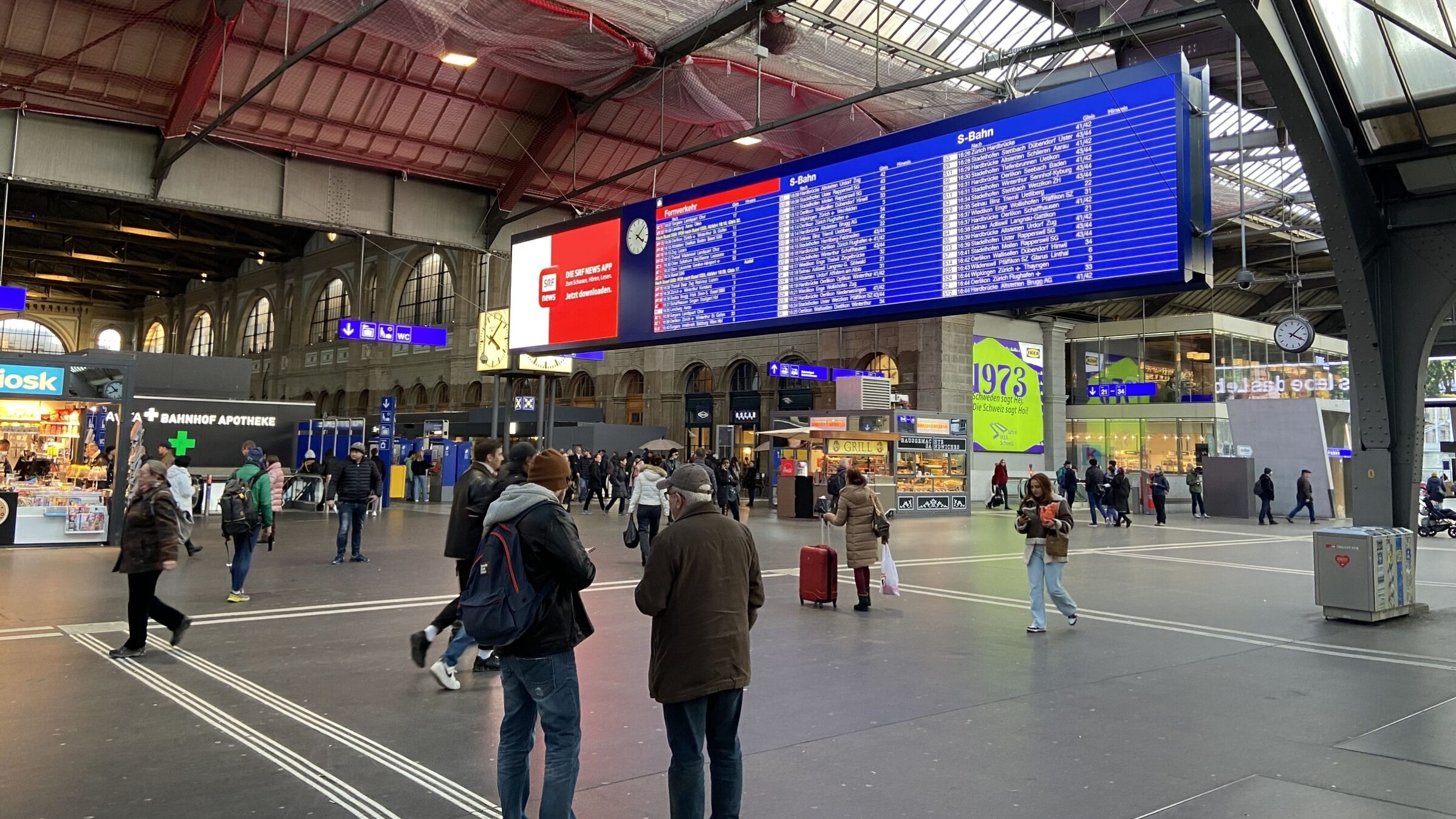1 – Sound Qualities in Architectural Design
I – Public/Semi-open > Zürich Main Station
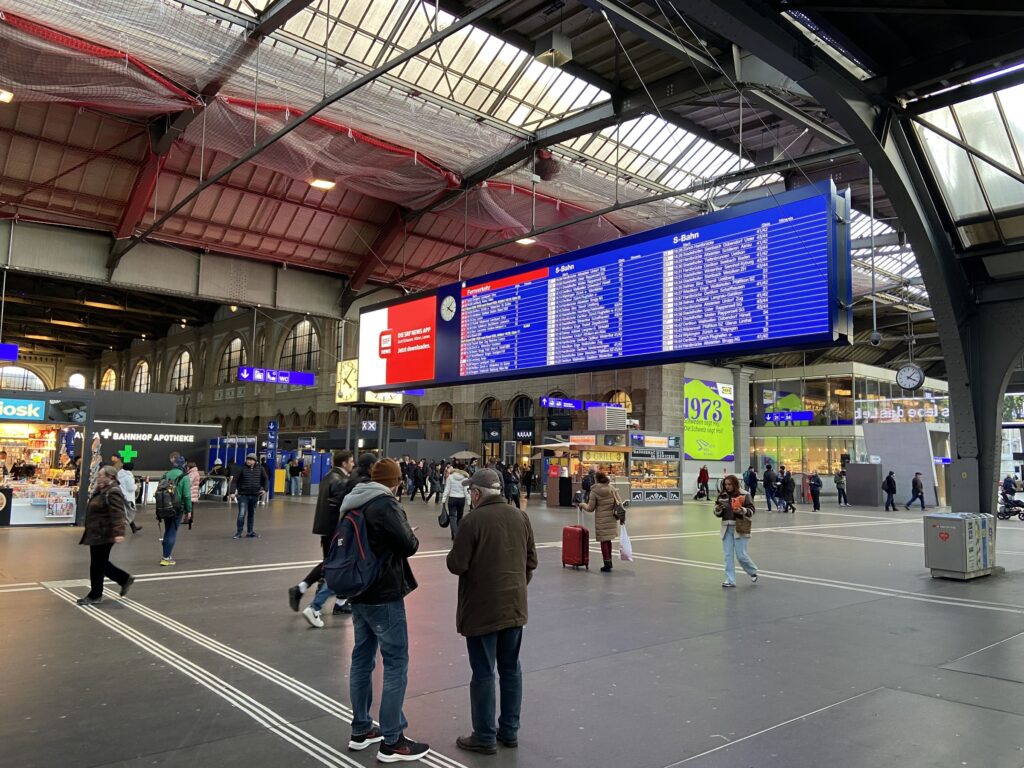
The center of transit, under its large canopy houses also shops, restaurants, and links to the underground levels.
For every traveler, commuter, the main station is perhaps the first acoustical experience that each receives from the city of Zürich. Rain or shine, there are always many things happening simultaneously on and around the platform, where one feels the liveliness of a city.
From the audio clip, sounds of siren, beeping sound of closing train doors, and acceleration of train movement weave together. You hear the time slipping away.
Throughout the clip, there is also a constant low frequency buzzing sound originating from the motors of train cars and rustling sound from air flow.
The space sounds live with the echoing of siren and a little muddy. After the train departed, there weren’t many people on the same platform, which renders the space acoustically open.
II – Public/Enclosed > HIL E7
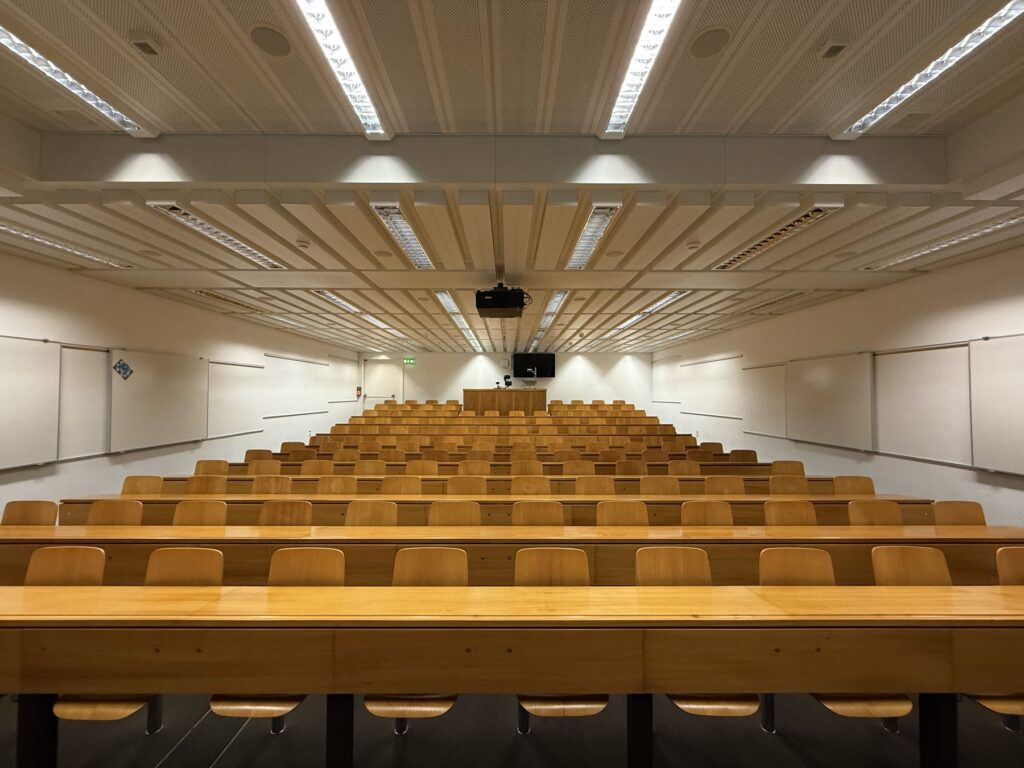
A lecture room in HIL, primarily used as a lecture hall and study space in between courses.
Spatially this room features compressed layout of rectangular shoebox shape with stepping row seats and has folded metal unitized ceiling with acoustic panels along the two long sides of the edges.
Through a recording of clapping in different part of the room while the room is empty (from closer to the lecturer’s position to the very rear end of the space), the acoustic experience at different part of the room varied significantly.
Clapping along center axis of the space creates an echoey and dense effect that is comparable to clapping inside a tunnel. However, when clapping along peripheral of the space, the space becomes dead with almost no reverb.
During the lecture, the lecturer’s voice won’t be able to project to the rear end intelligibly, which deems the use of microphone necessary in most cases.
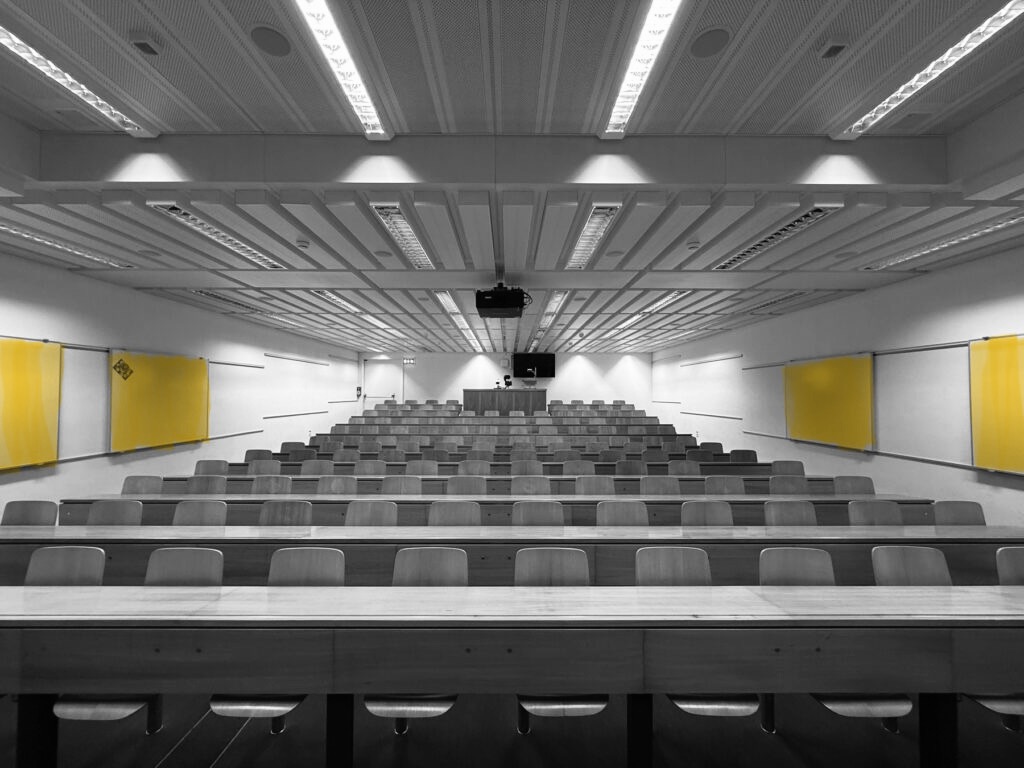
2 – Emotional Impact of Everyday Sounds
I – Inside a Train Car
In the train car, acoustically one hears a man speaking on the phone in a foreign language, shrilly sound of a baby crying intermittently, constant rumbling from the moving train, occasional crisping sound of others’ tearing packaging, soft and crispy sound from typing keyboards, muffled sound from the automatic sliding door to the vestibule and whispering sounds of other passengers’ stuffing their belongings from time to time.
Overall, the most catchy sound was from baby crying and the most likely overheard-sound was from the sliding door to the train vestibule.
The higher-pitch sound draws more attention and has more influence to my emotional state.
II – Kitchen/dining space in my wg
Morning routine of making breakfast and coffee before leaving for the university. The space is roughly a rigid shoebox in geometry and composed of painted concrete wall on three sides and a floor-to-ceiling window that provides a view to the rear yard.
During preparation, the sounds from running oven fan, electromagnetic sound from the stove and clashing of cutlery with the stainless steel countertop amplify through reverberation within the space. In contrast with the relatively quiet surroundings, these manmade sounds falsely give an impression of multiple people simultaneously working at the kitchen.
Later, when having breakfast, the surrounding calms down again and the sound from fridge’s compressor emerges and occasionally the sound of airplane accelerating on the runway can vibrate the glazing, the sounds of
3 – Empirical and numerical estimation of room acoustic properties
I – HIL E7
Empirical Estimation

-10dB -> -60dB = 0.532 sec, therefore the estimated RT60 = 0.532*(6/5) = 0.6384 sec
There are no visible echoes in the impulse decay.
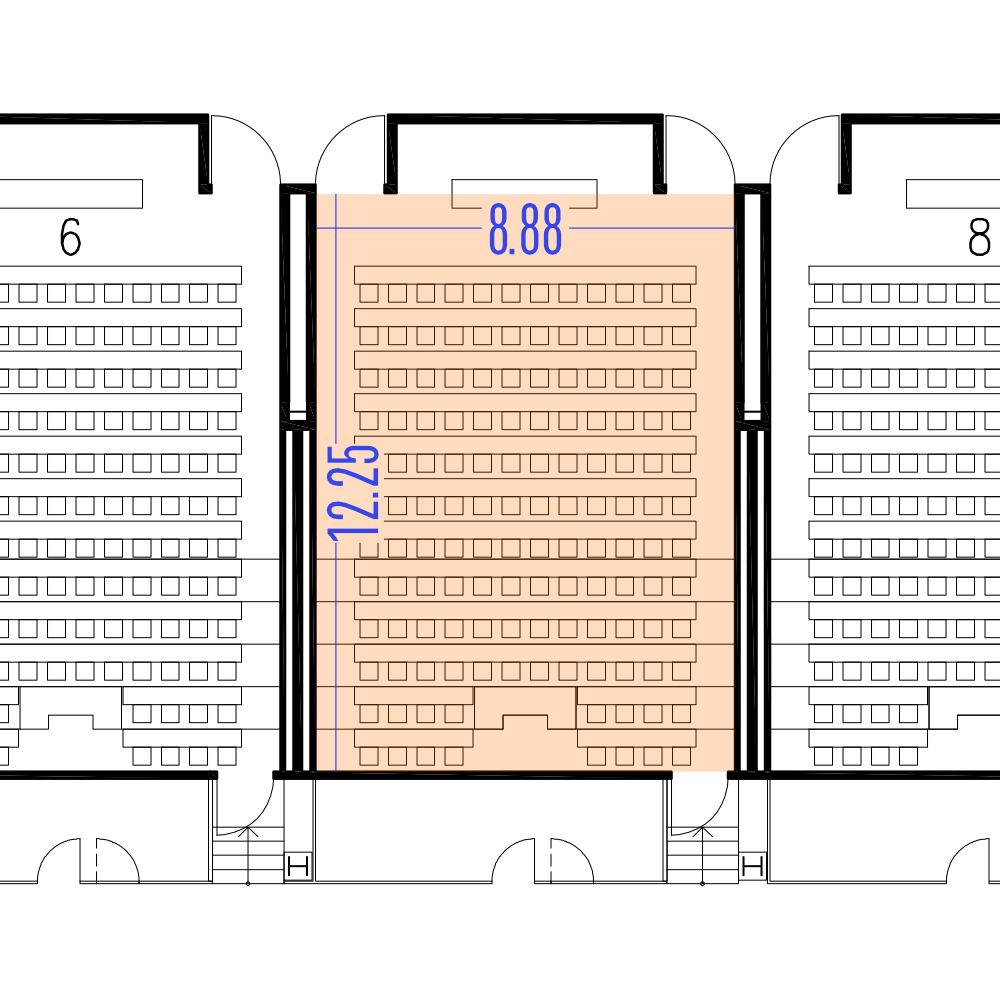
Numerical Estimation
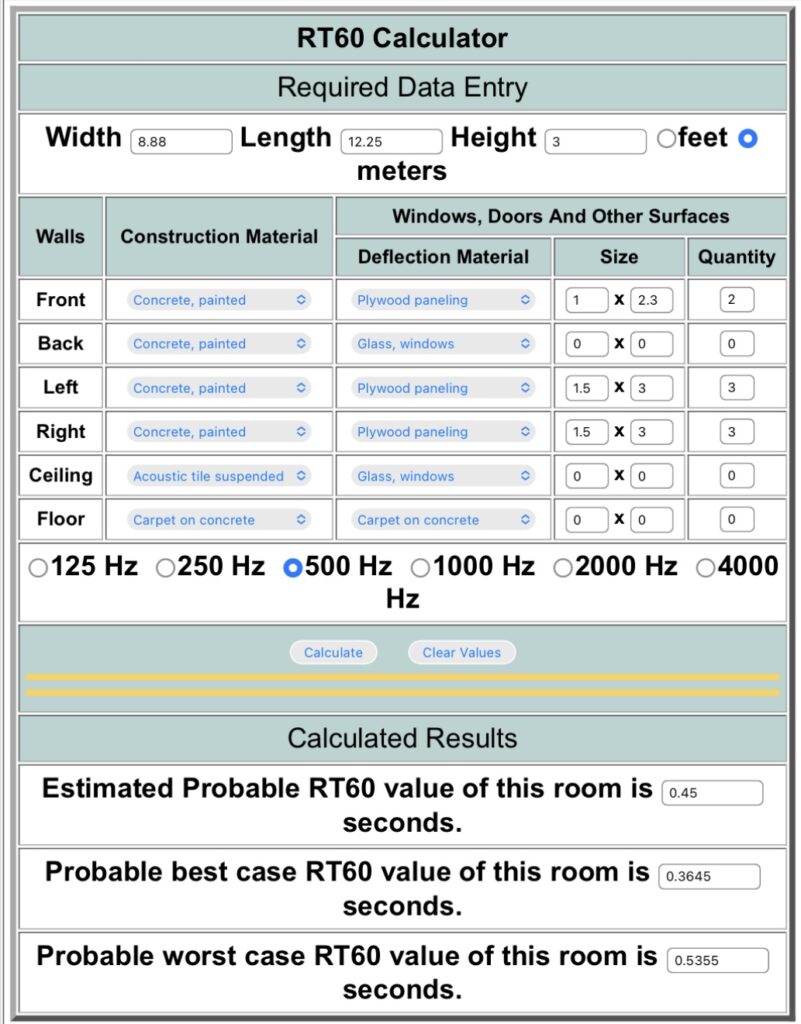
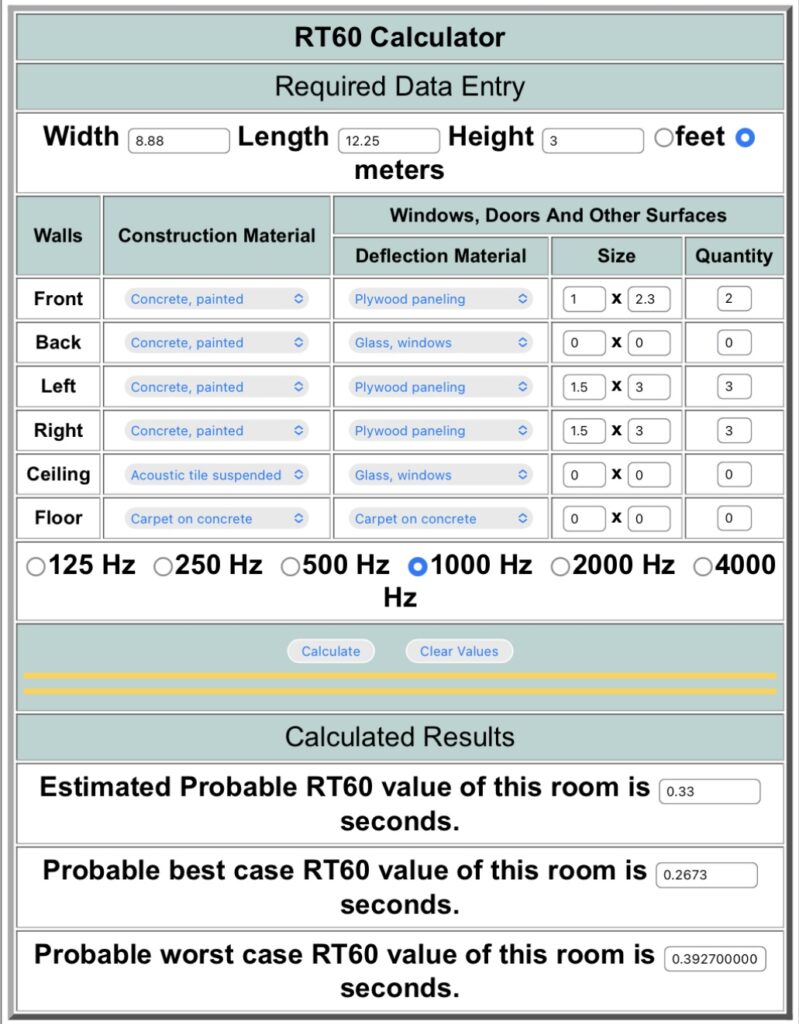
At 500 Hz, the estimated RT60 is 0.45 sec.
At 1000 Hz, the estimated RT60 is 0.33 sec.
II – A Bed Room
Empirical Estimation

-5dB -> -60dB = 0.558 sec, therefore the estimated RT60=0.532*(6/5.5)= 0.6087 sec
There are no visible echoes in the impulse decay.
Same recording at 50% of the speed, there seems to be echoing overlapped by impulse decay of the main clap.
Numerical Estimation
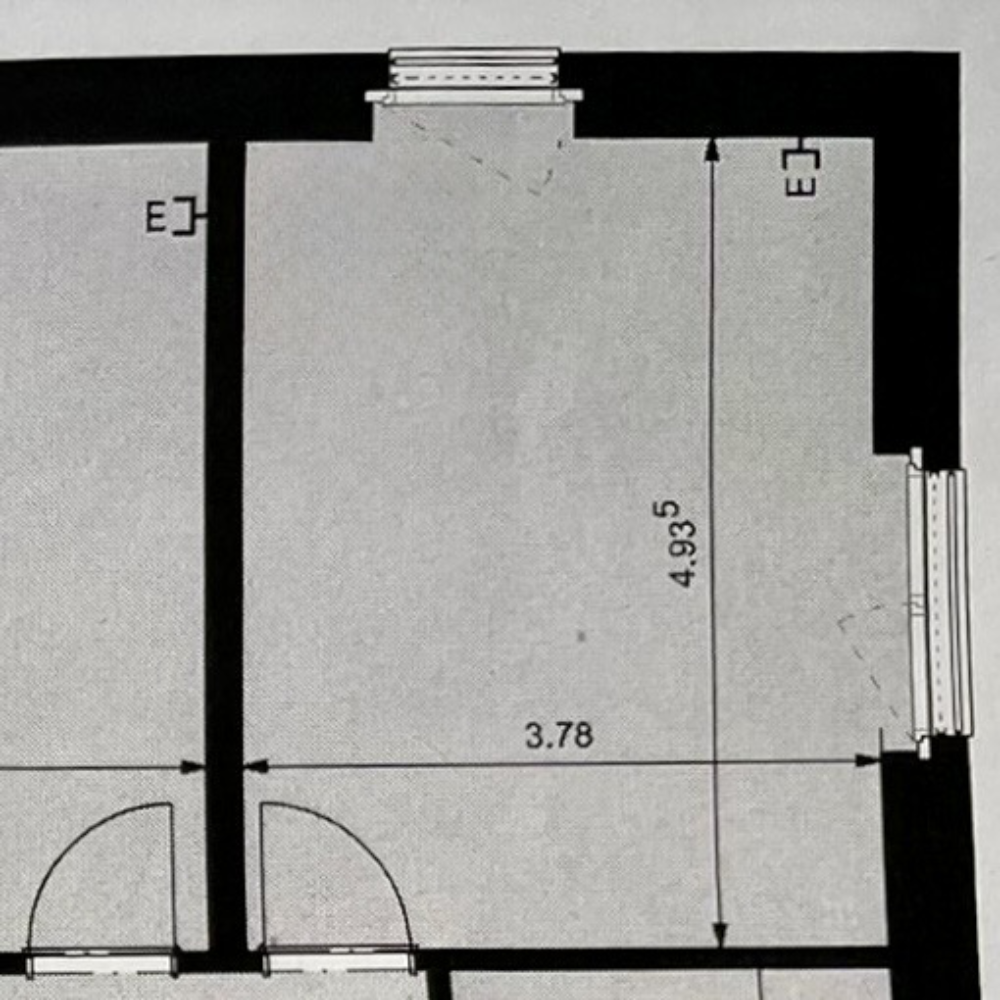
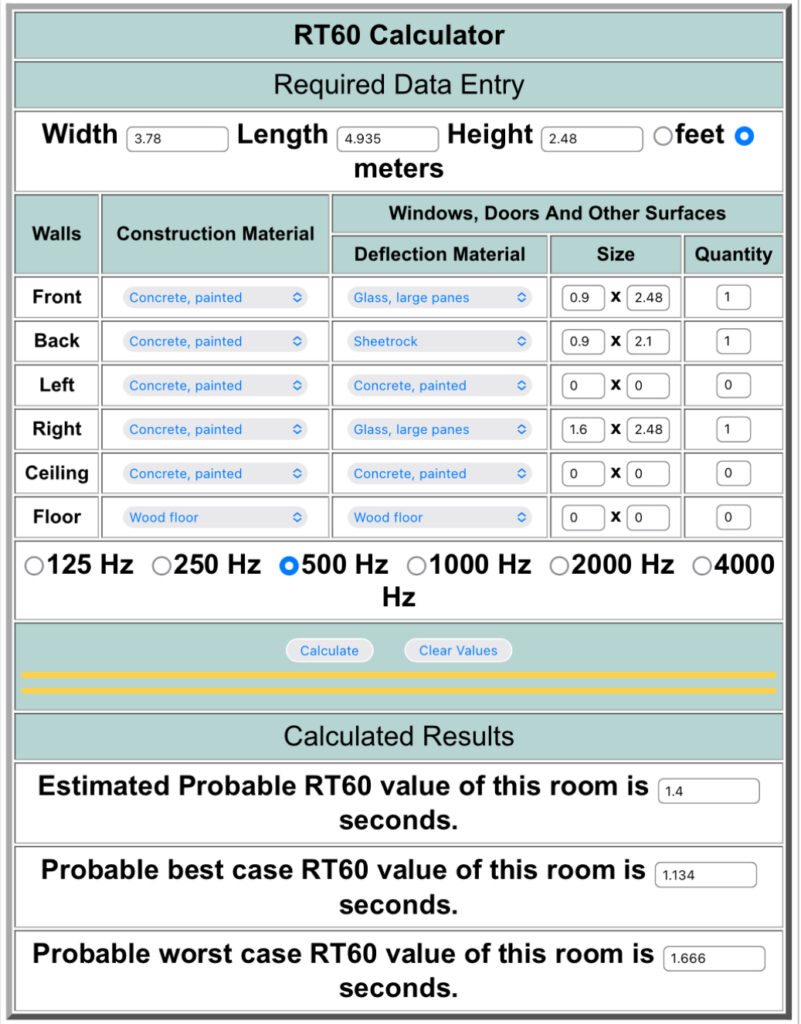
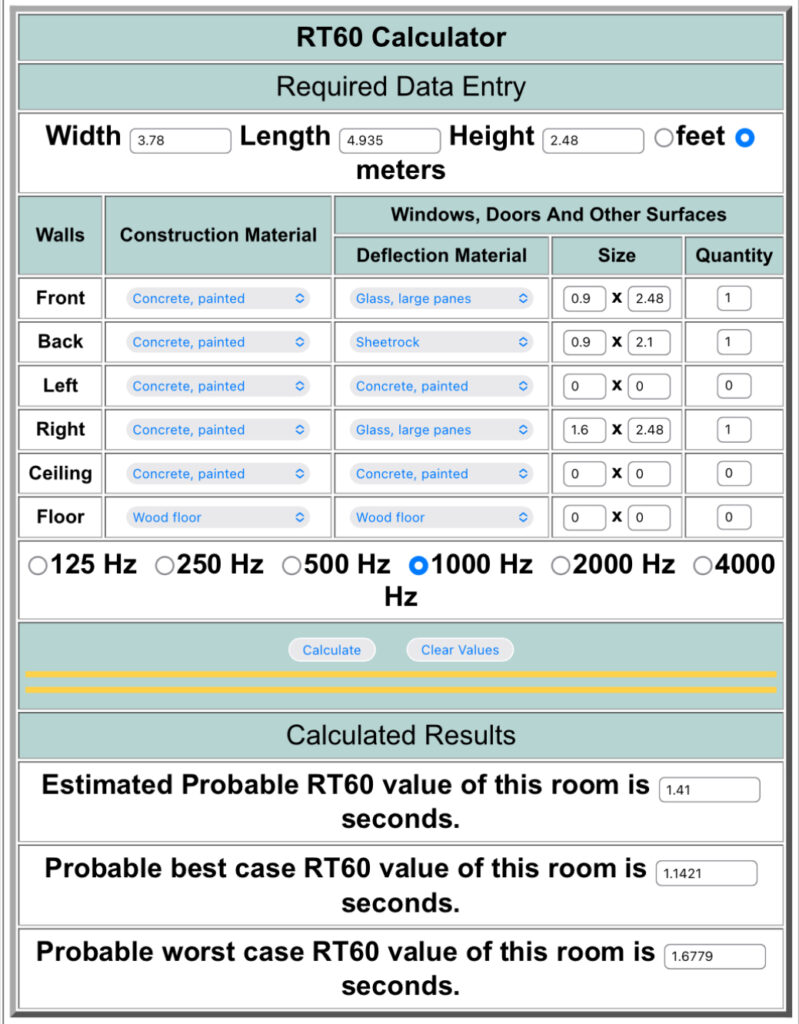
At 500 Hz, the estimated RT60 is 1.4 sec.
At 1000 Hz, the estimated RT60 is 1.41 sec.
Reference
RT60 Calculator
http://www.csgnetwork.com/acousticreverbdelaycalc.html
4 – The Full Picture
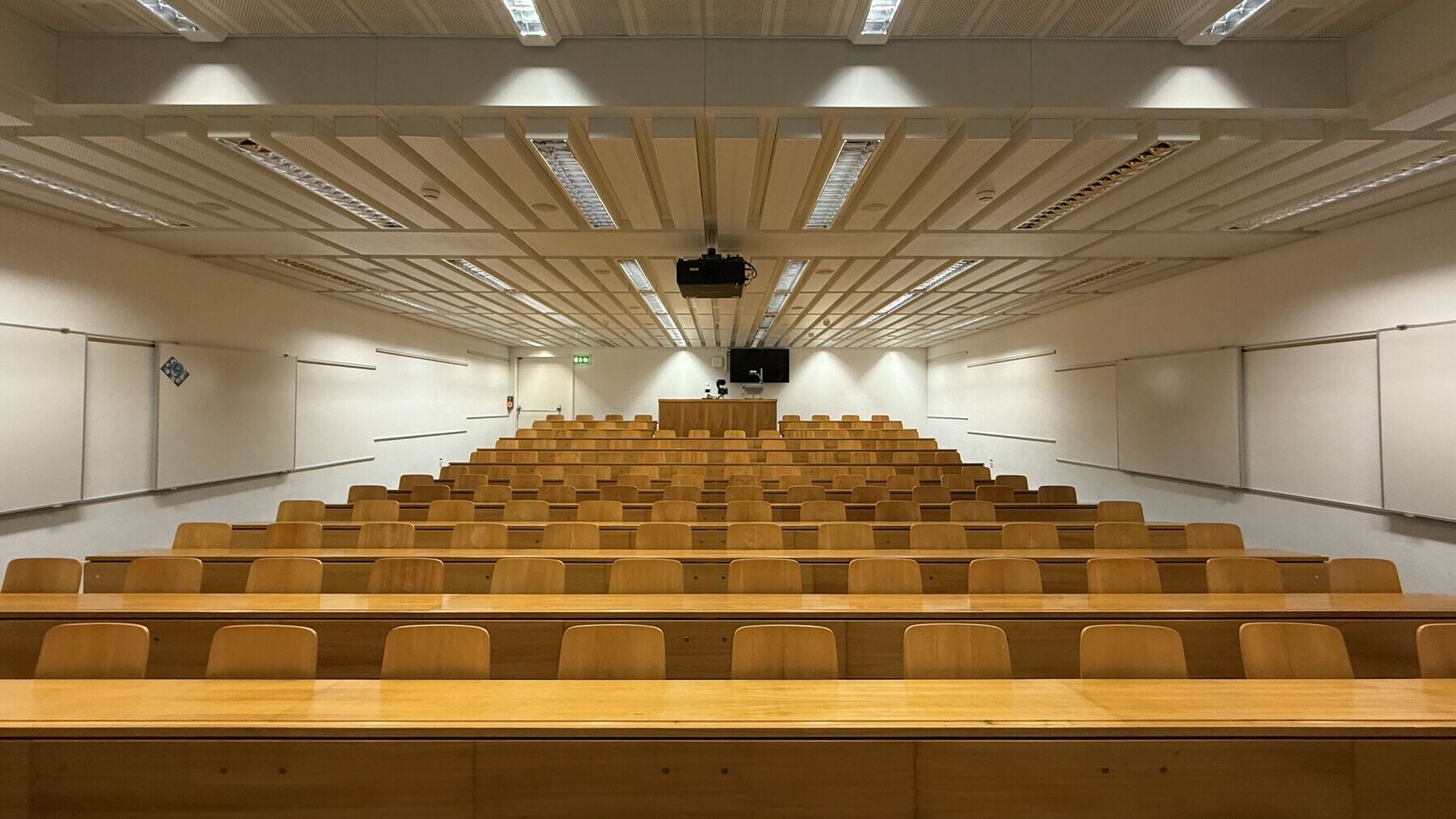
Intro
The lecture room E7 has the primary use case as lecture hall. According to the SIA 181/1 standard, this use case is categorized under 1b Sprache/Vortrag.
The following numerical estimations does not account for the hard wood seating and work planes, as well as any occupancy.
Standard
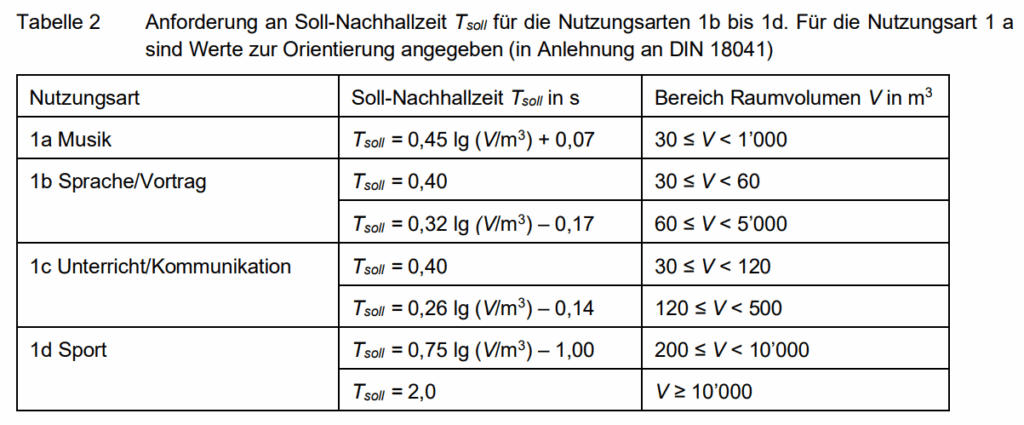

Assuming the space is roughly 3m in height, the room size is about:
12.25 x 8.88 x 3 = 326 m3
T_soll = 0.32 x log(326) – 0.17 = 0.634 sec
Empirical analysis

-10dB -> -60dB = 0.532 sec, therefore the estimated RT60 = 0.532*(6/5) = 0.6384 sec
From the standard and empirical analysis, the room seem to be meeting the target values.
Space Geometry
The room features a rectangular layout with no concave nor convex surfaces that may focus or diverge sound energy. However, the extended parallel hard surfaces along long-axis of the room are potentially sound reflective.
In terms of sound absorbers in the room, they are mainly positioned on the floor and ceiling surfaces. Of course, when the space is occupied, human body become additional sound absorbers in the space.
Materials in the space
The acoustically effective elements (absorbers):
| Location | Material | Absorption Properties |
| Floor | Carpet | mid / high-frequency range |
| Ceiling | Perforated metal ceiling panels | all frequency range, especially good at mid / high-frequency range |
The placement of acoustical absorbers is not well enough for 2 main reasons:
1. All ceiling surfaces are covered with absorbers, which reduces its ability to reflect sound projected by speaker in the front to rear part of the room. This reduces the intelligibility
2. No sound absorbers on the two parallel walls on the long axis to prevent flutter echoes.
Retrofit Recommendation
Empirical speaking, for audiences seating at back of the room have reduced intelligibility due to the lack of reflective surfaces on the ceiling to reflect some sound to the rear part of the room. When seating closer to the wall, longer reverberation and sometimes fluttering echoes can be heard and further reduced speech intelligibility.
Adding acoustical panels along the long axis could make the space acoustically irregular and eliminate potential of fluttering echoes.

Reference
SIA 181/1 Raumakustik
https://cms.sia.ch/de/api/getMedia/743
DIN 18041
https://akustikbuero-ol.de/images/akustikbuero-ol/pdf/Laermbekaempfung_02_2016_S.50-55.pdf
⁂ – Seeking Silence
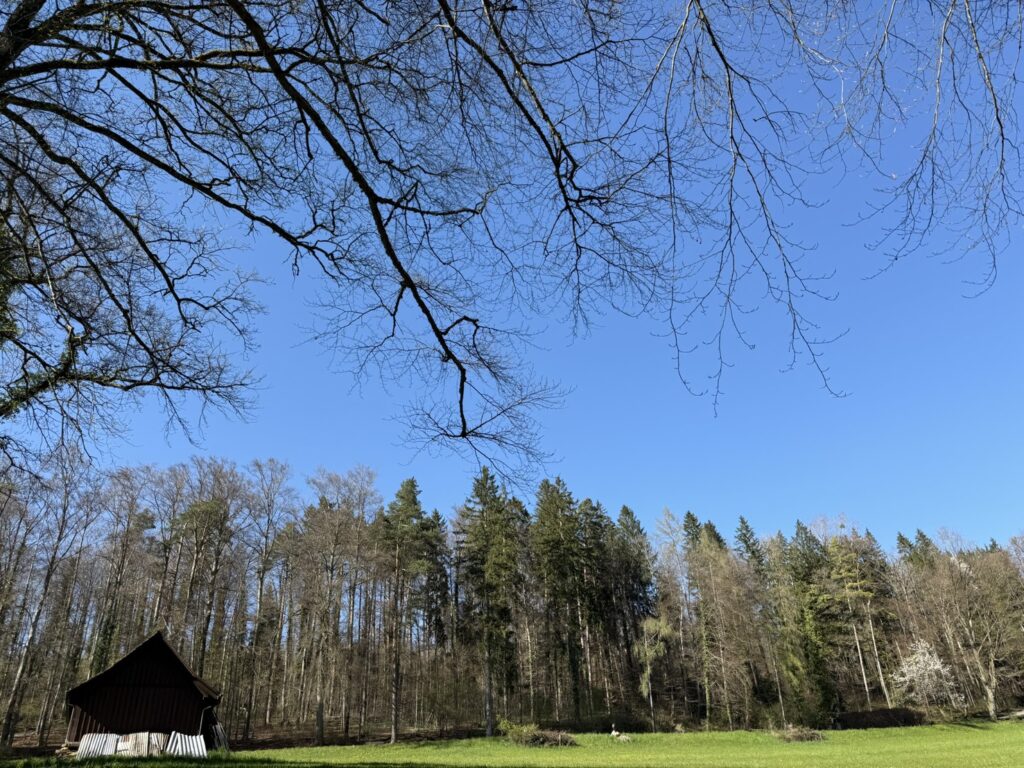
The few minutes spent standing along the path brought calmness to my mind. It was a sunny day which the sun encouraged me to explore Küsnacht. I was surrounded by the trees that limit my view to further out and I began to notice sounds of my breath: inhale… … exhale… …
Later, a gust of wind came by and wabbled the corrugated panels by the cottage. The wabbling sound prolonged even after the wind has ceased.
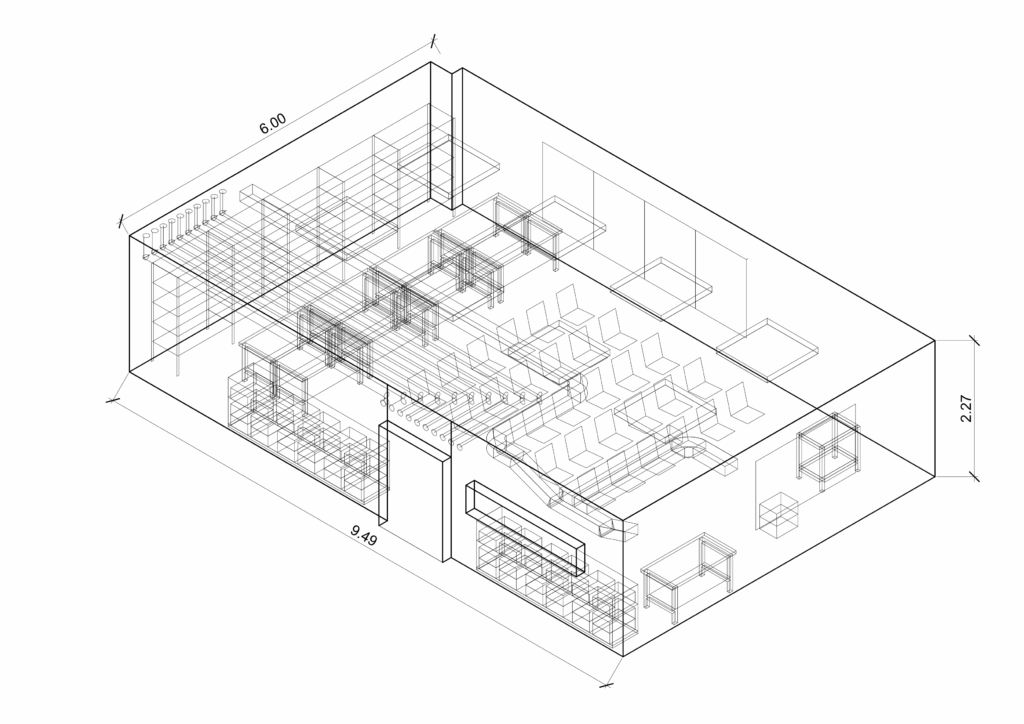
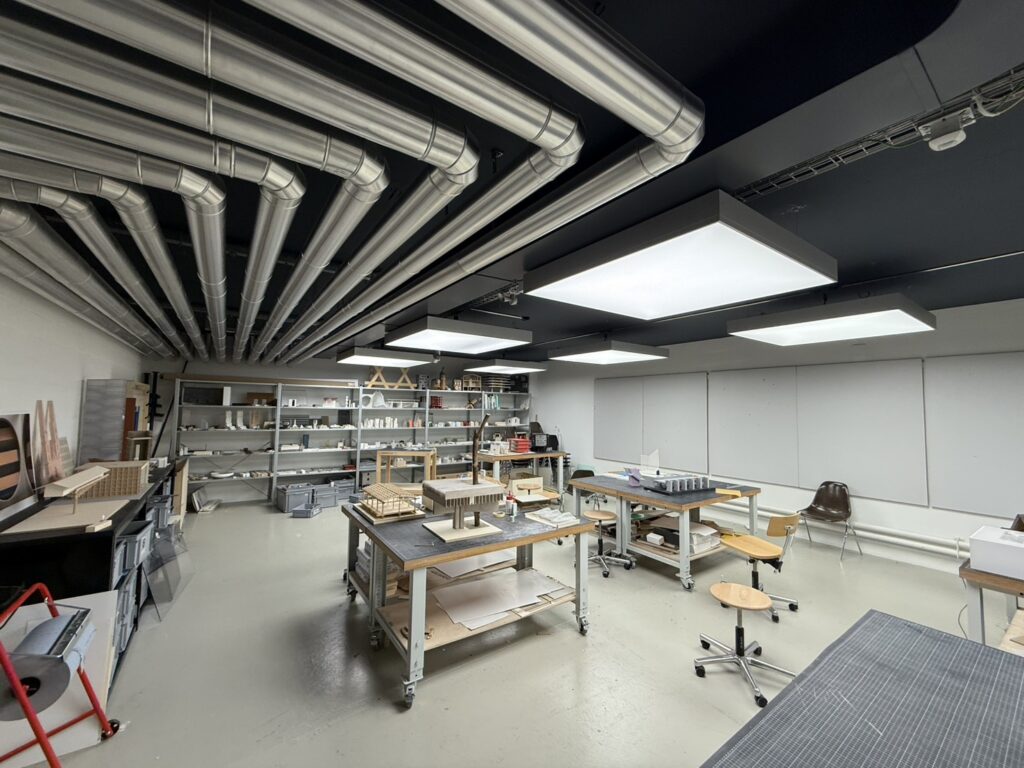
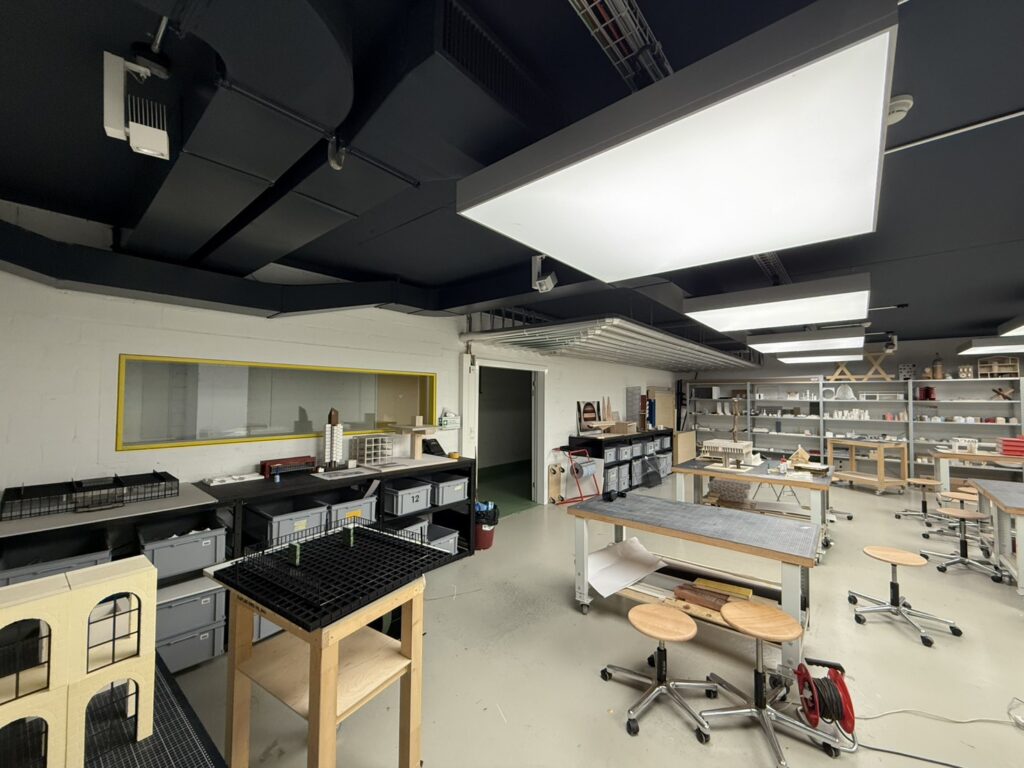
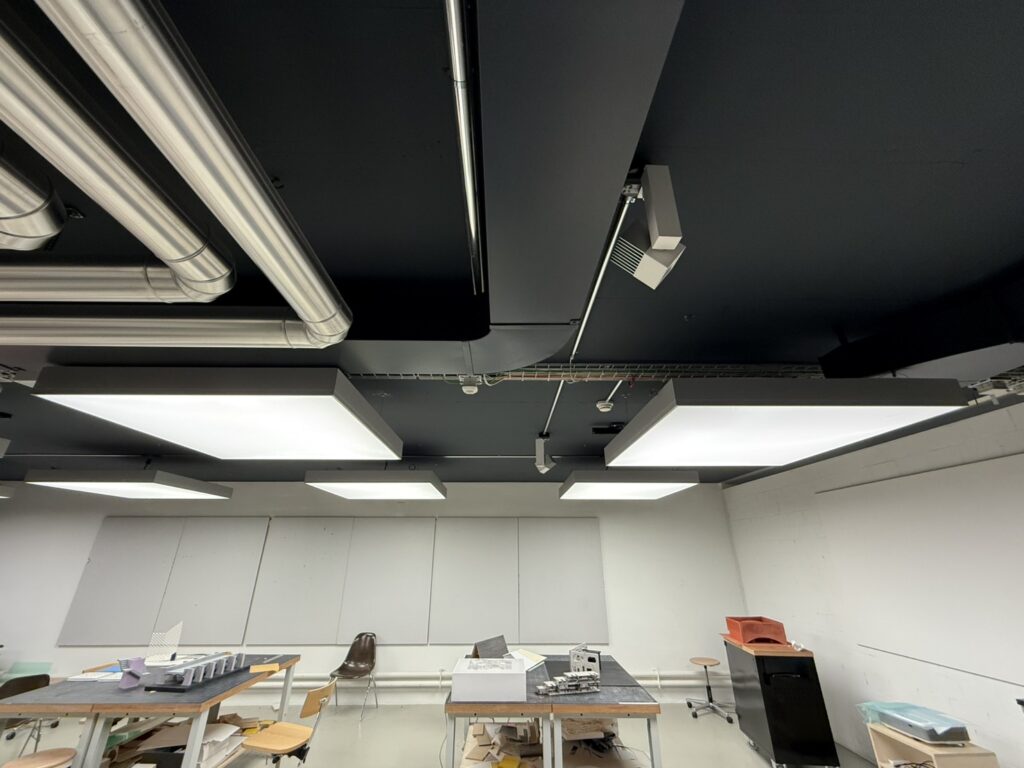
Current Acoustic Condition
Use Case and Reference Standard
The multipurpose room of Raplab (HIL B61), has the primary use case of lecture and workspace.
According to the SIA 181/1 standard, this use case is categorized under 1b Speaking/Lecturing or 1c Teaching/Communication. Take 1c as reference standard as it requires a smaller T_soll.
The target T_soll of 1c is then:
0.26 lg(238 m3/m3) – 0.14 = 0.48s
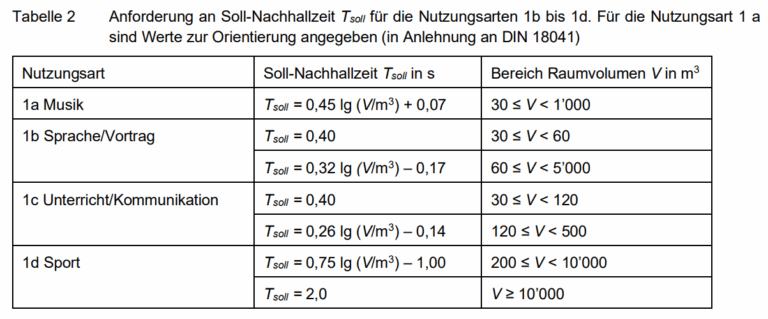
Sound Frequency for Speaking
Approximate from 250 Hz – 4 kHz
Reverberation Estimation
- Numerical Estimation
For the room with volume of 238 m3, consider the sound frequency of 250 Hz – 4 kHz.
With the material information, the existing RT_60 is in average 1.8s, far from the target value.
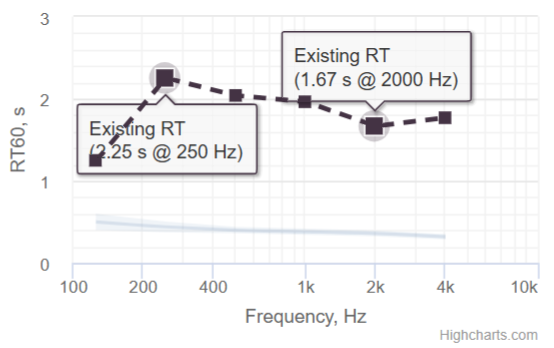
Empirical Estimation

From the estimation, the room with its current setting as workspace has a RT60 value of 0.86s, which does not meet the goal (T_soll) of 0.4s.
Summary of Reverberation Estimation
The numerical estimation reaches its limit due to the unknown material properties / quantities (eg. clothes, models, shelf…)
Nonetheless the current RT is far from meeting the T_soll value, intervention needs to be implemented.
Proposed Acoustic Treatment
From the existing condition analysis, the space has very limited amount of sound absorbing material, which shortens RT.
Targeting specifically in the frequency band between 250-4000 Hz, the following sound absorbing materials are recommended.
Ceiling
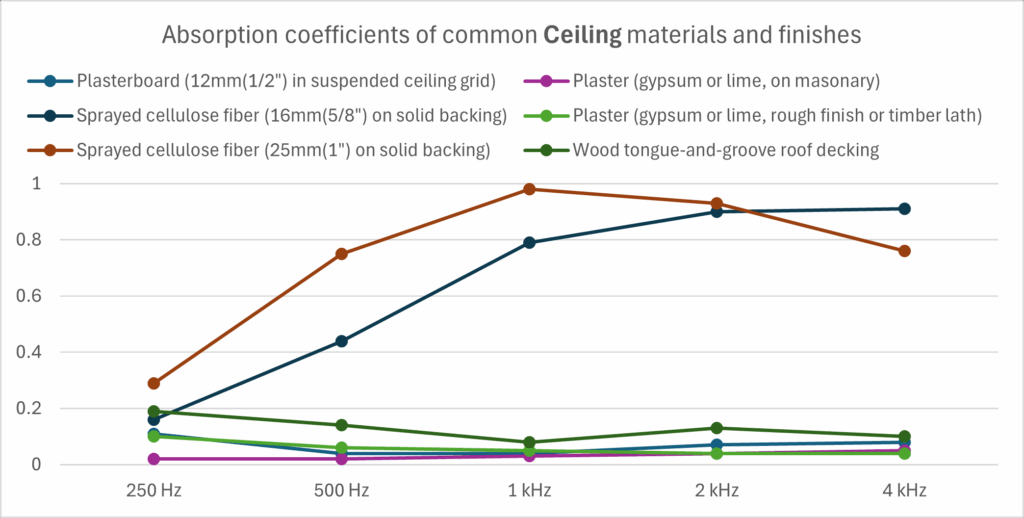
Cover concrete ceiling surface with “Wood tongue-and-groove planks”

Source: https://www.akouo-acoustics.com/woodline-groove
Wall
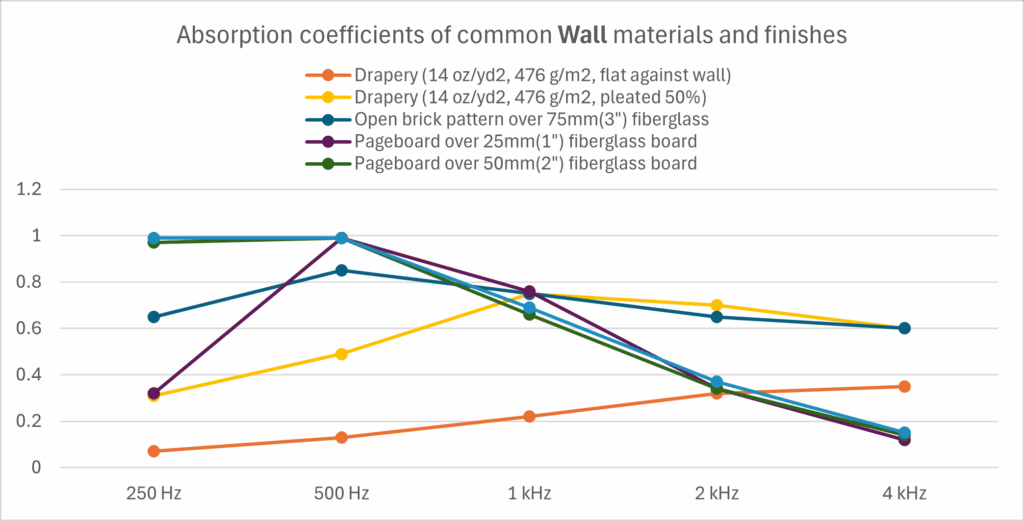
Replace current side reflectors with “Pattern Fiberglass”
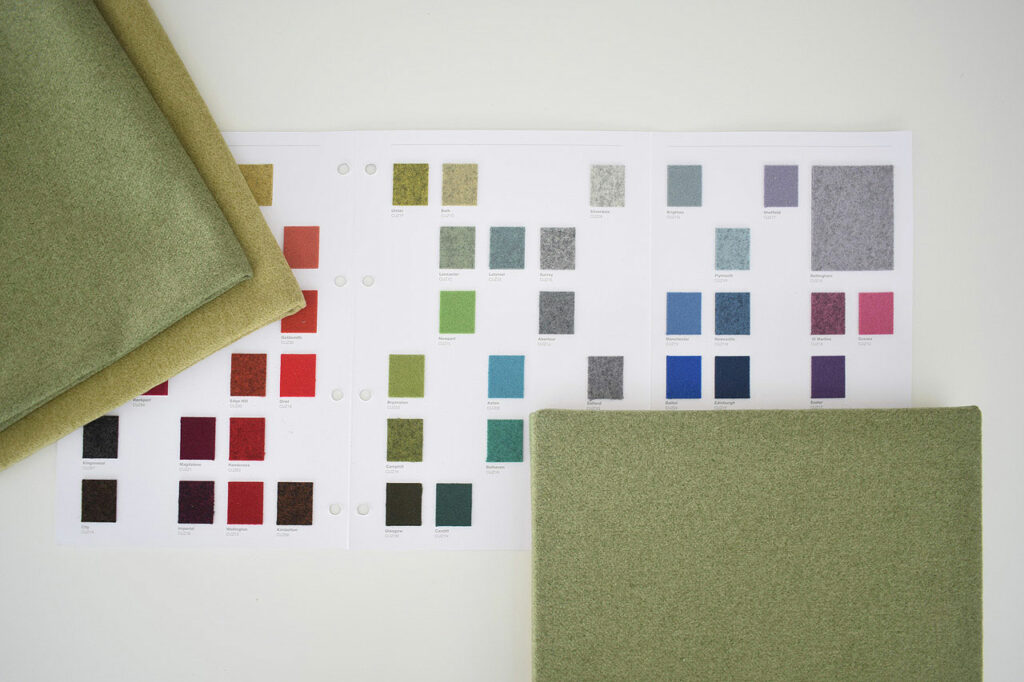
Source: https://auralaid.com/fiberglass-acoustic-panels-for-noise-control-in-singapore-workspaces/
Floor
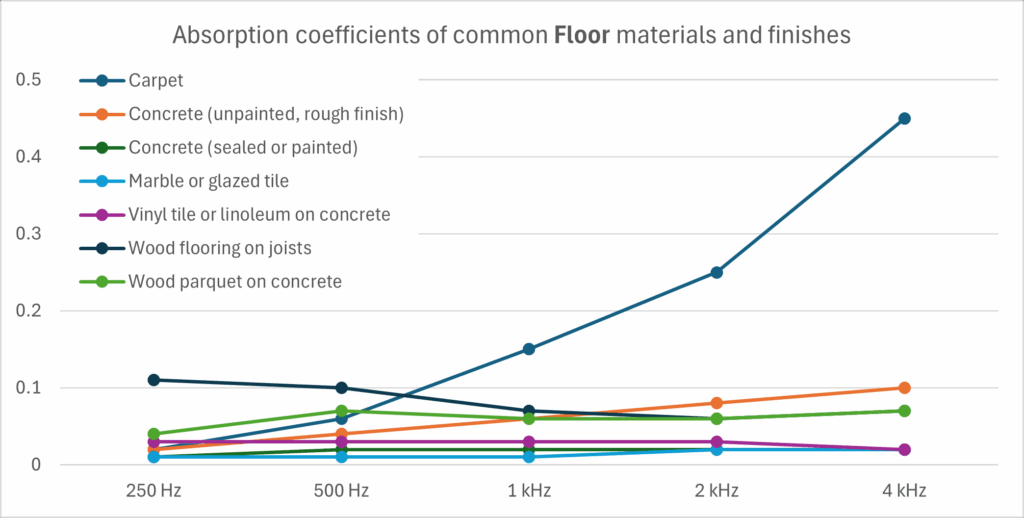
Cover floor surface with “carpet”
Summary
The intervention drastically improved the reverberation time in this room.


